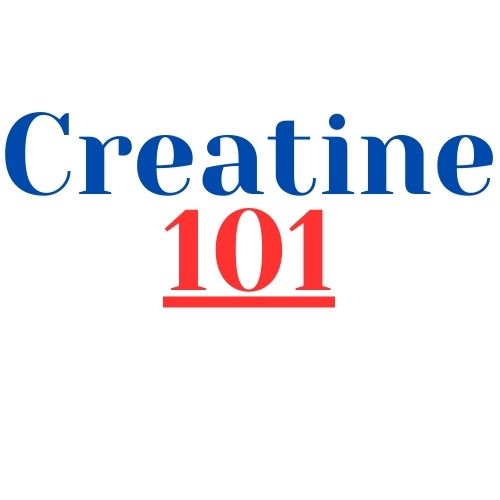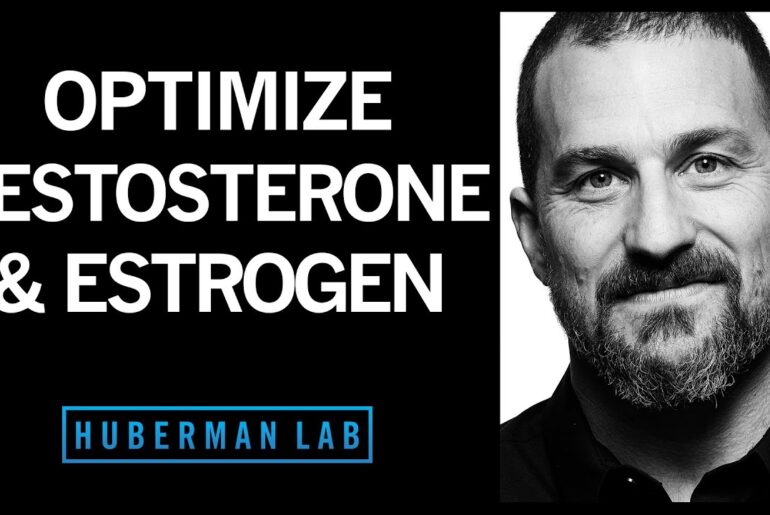
An overwhelming majority of athletes are on a perennial quest to enhance performance, often turning to trusted supplements like creatine for an edge. As I delved into the science behind Creatine Intake Timing and Muscle Cramps, I discovered a facet of creatine that seems paradoxical at first glance: the very product vilified for causing muscle cramps may, in fact, play a role in preventing them. With more than 500 peer-reviewed studies backing its efficacy and safety, the focus has now shifted towards understanding the best timing for creatine intake to harness its full potential while keeping muscle cramps at bay.
When I explore ways to contribute to muscle cramps prevention, timing is everything. Particularly with creatine, where its osmotic properties can be a double-edged sword, affecting muscle hydration in ways that may prevent cramping if used judiciously. Finding that sweet spot is crucial—consumed too close to activity, and it could precipitate a cramp; too far, and the muscle might not be primed to utilize it effectively.
Key Takeaways
- Over 500 studies endorse the safety and muscle benefits of creatine.
- Creatine’s osmotic properties can maintain intracellular water balance.
- Proper creatine intake timing is pivotal for cramp prevention and performance.
- Understanding when to take creatine could minimize cramping risks.
- Intake timing should consider exercise proximity to optimize creatine’s effects.
- Personal experiences and studies reveal that creatine may decrease cramp incidence.
The Importance of Creatine for Athletic Performance
As an enthusiast of sports science and nutrition, I am intrigued by the dynamic influence that creatine supplementation benefits have on athletes across various disciplines. Known for its pivotal role in enhancing athletic performance and muscle energy optimization, creatine emerges not just as a supplement, but as a cornerstone in the edifice of sports supplementation strategies.
Understanding Creatine’s Role in Muscle Energy Production
At the heart of creatine’s prowess is its ability to expedite the synthesis of adenosine triphosphate (ATP), the quintessential molecule that fuels muscle contractions. During short-term, explosive activities like lifting weights or sprinting, ATP is consumed at a rapid rate. The provision of creatine ensures a swift reconversion of adenosine diphosphate (ADP) back into ATP, thereby bolstering the muscles’ ability to maintain high-intensity performance over longer durations.
The Impact of Creatine Supplementation on Strength and Endurance
Supplementation with creatine has been repeatedly shown to volumize muscle phosphocreatine stores. This, in turn, directly translates to significant gains in strength, power, and muscular endurance. Interestingly, such benefits have been universally endorsed by the community of athletes—from the elite Finnish sprinters to global bodybuilders—impressed by creatine’s capacity to increase work output during successive periods of muscle exertion.
Scientific Perspectives on Creatine Benefits for Athletes
Let’s not overlook the wealth of scientific data that corroborates the anecdotal evidence presented by athletes. Empirical research has validated that creatine supplementation is instrumental in not just sprint performance but also in facilitating recovery between sets, and extending the total work volume, an aspect crucial for athletes aiming to breach their performance thresholds.
| Performance Metrics | Without Creatine | With Creatine |
|---|---|---|
| Phosphocreatine Recovery | Slower | Faster |
| Muscle Strength | Baseline | Increased |
| Work Volume | Standard | Elevated |
| Sprint Performance | Consistent | Enhanced |
| Recovery between Sets | Standard | Improved |
Championing the divulgence of factual insights on sports nutrition, I remain committed to communicating scientific verities over anecdotal speculation; embracing the role of creatine as an indispensable ally for athletes striving for peak performance. And it echoes in gyms, tracks, and sports complexes alike—creatine’s laden potential ready to be harnessed by those seeking the edge in athletic prowess.
Exploring the Link Between Creatine Intake Timing and Muscle Cramps

As someone deeply invested in the science of sports nutrition, I’ve been closely examining the relationship between creatine intake timing and its reported effects on muscle cramps. It’s a common concern among athletes that creatine may increase the occurrence of cramps. Yet, intriguing data suggests that optimal creatine timing could play a pivotal role in reducing muscle cramps with creatine supplementation.
Meticulous research has gone into understanding how the precise timing of creatine intake affects athletes differently. Let’s consider the example of athletes training in high humidity and heat—an environment that’s often a catalyst for muscle cramps. By adjusting the timing of creatine consumption, these athletes may experience a relevant decrease in cramp susceptibility. This is instrumental knowledge given that cramps can hinder performance and lead to injury.
Here are a few key points I’ve uncovered in my analysis:
- Regarding creatine intake and cramping, a consistent finding has been that when supplemented responsibly, creatine does not lead to increased cramps; it may actually mitigate them.
- Certain studies indicate that consuming creatine post-workout can be particularly effective, lending credence to the idea of optimal creatine timing for muscle recovery and hydration.
- The strategy of reducing muscle cramps with creatine supplementation often includes a mix of proper dosing, timing, and ensuring overall hydration.
Through this lens, the “when” of creatine consumption emerges just as vital as the “how much” and “why.” Amplifying this discourse, I want to provide insights that not only reflect personal observations but are also grounded in scientific research and consensus within the athletic community.
“The art of supplementation is as much about timing as it is about quantity. Perfecting this could redefine our approach to ergogenic aids and their role in cramp prevention,” says a seasoned sports nutritionist I consulted with recently.
In the spirit of evidence-based practice, I’ll venture further into discussing strategies athletes can harness to minimize cramps and maximize the functional benefits of creatine. It’s an evolving conversation with multi-faceted implications for athletic performance and wellbeing.
How Creatine Supplementation Can Affect Hydration and Cramp Susceptibility
As I delve into the nuances of how creatine influences our body’s hydration levels, it’s imperative to understand the sophisticated interplay between creatine supplementation and its effects on hydration. The creatine effects on hydration are multifaceted, and understanding them is critical for athletes aiming to optimize their performance while preventing exercise-induced cramps. Studies have brought to light that creatine enhances cellular water balance, a refreshing insight for those grappling with cramp concerns during rigorous workouts.
The Role of Creatine in Cellular Water Balance
The relationship between creatine and cellular water balance enhancement is a tale of cellular dynamics. The osmotic properties of creatine dictate that when it enters a muscle cell, water follows, engorging the cell with life-sustaining fluid. This increase in intracellular water volume can be pivotal in maintaining proper hydration status, potentially reducing the risk of muscle cramps that plague many an athlete.
Combating Dehydration to Prevent Cramps During Workouts
Dehydration stands as a notorious provocateur of muscle cramps, undermining athletic endurance and potency. To thwart the threat of dehydration and its cramp-inducing tendencies, I remain vigilant in my hydration practices, fortifying my regimen with creatine to promote a hydrated, cramp-averse muscular environment. It’s not merely about drinking water; it’s about ensuring that water is retained where it counts—in my muscle cells.
| Effect of Creatine on Hydration | Impact on Exercise-Induced Cramps | Recommendations for Athletes |
|---|---|---|
| Increases intracellular water volume | May reduce risk of cramping | Monitor hydration levels when supplementing |
| Does not affect overall body water | Cramp susceptibility not increased | Combine with balanced electrolyte intake |
| Enhances cellular water balance | Supports muscle function | Consistent intake aligned with training |
In sum, my experiences with creatine have steered me toward a judicious approach to hydration, comprehending deeply the necessity for adequate fluid intake and retention. The leverage creatine grants me in maintaining my cellular water balance is a cornerstone of my strategy to stave off the dread of exercise-induced cramps. And so, this dance continues—a rhythmic interplay between creatine and hydration, step by step improving athletic performance.
Optimal Creatine Timing for Maximum Results

As someone deeply invested in the nuances of supplement timing for muscle health, I’ve always been intrigued by the debate over the most effective timing creatine for maximum results. Research indicates that the precise moment of ingestion can play a pivotal role in how creatine impacts the body. Consequently, numerous studies have focused on pinpointing the ideal when to take creatine for enhancing athletic performance and muscle recovery.
Aside from the conventional wisdom that positions creatine as a pre-workout booster, emerging evidence is shining a light on the post-workout phase—a critical window when our muscles are primed for nutrient uptake. This insight has stirred a shift towards advocating post-exercise creatine consumption as part of a strategy for optimized creatine timing for muscle health.
Consuming creatine post-workout can take advantage of the increased muscle perfusion that exercise induces, thereby potentially improving its retention and efficacy.
In my effort to demystify the intricate choreography of nutrient timing, I’ve crafted a comprehensive look into how different creatine intake schedules can affect muscle synthesis and recovery.
| Creatine Timing | Associated Benefit |
|---|---|
| Pre-Workout | Increased muscle saturation, potential boost in explosive power |
| Post-Workout | Enhanced uptake by muscles, improved recovery and growth |
| Non-Workout Days | Maintains creatine levels, assists in continuous muscle recovery |
There’s no denying that optimizing creatine intake schedules is a nuanced dance, one that can vary based on individual workout rhythms. Yet, incorporating creatine supplementation to harness the heightened muscle sensitivity after a workout can reign supreme when keyed into the right sequence. It’s this choreographed approach that may unlock the door to maximized muscle health benefits and lead to superior strength and body composition outcomes.
Creatine Intake Guidelines to Reduce Muscle Cramps
For athletes aiming to harness the muscular benefits of creatine while reducing muscle cramps, adherence to established creatine intake guidelines is essential. A strategic approach that combines careful dosage and timing with an awareness of electrolyte balance can help optimize creatine’s benefits and minimize the risk of cramps.
Recommended Creatine Dosage for Athletes
Maintaining the correct dosage of creatine is crucial for efficacy and safety. Typically, responsible creatine supplementation follows a two-phase approach: the loading phase and the maintenance phase. Let’s delve into the specifics of these phases to understand how they can contribute to reducing muscle cramps and maximizing performance.
The Synergy of Creatine and Electrolytes for Cramp Prevention
Beyond creatine alone, athletes must consider the harmonious interplay between creatine and electrolytes in their body. Ensuring a balanced intake of electrolytes such as sodium, potassium, and magnesium, in conjunction with creatine, is vital. Why? Because this synergy plays a pivotal role in maintaining proper muscle function and hydration — key factors in cramp prevention.
| Creatine Phase | Dosage | Duration | Benefits |
|---|---|---|---|
| Loading | 20 g/day (divided into 4 doses) |
5-7 days | Quickly increases muscle creatine levels |
| Maintenance | 3-5 g/day | Indefinite | Maintains elevated creatine levels |
| Electrolyte Balance | Varies based on individual needs | Daily | Enhances creatine uptake and hydration |
When pursuing athletic excellence, I cannot stress enough the importance of combining creatine intake guidelines with a well-hydrated state and sufficient electrolyte intake. Doing so can go a long way in reducing muscle cramps and maximizing physical potential. After all, the synergy between creatine and electrolytes is more than just supplementation; it’s a strategy for sustained athletic performance.
Case Studies: Athletes Successfully Managing Cramps with Creatine

In my pursuit to understand the relationship between creatine supplementation and muscle cramp management, I have discovered compelling case studies that shed light on real-world applications. Athlete experiences, particularly those from high-intensity sports, offer invaluable insights into how creatine may aid in reducing cramp occurrences and enhancing overall athletic performance.
Experiences from Division IA Collegiate Football Players
Historically, Division IA collegiate football players have provided a rich source of data for examining the effects of supplement intake due to their rigorous training schedules and physical demands of the sport. In reviewing these case studies, a noteworthy trend emerged—consistent creatine use was often accompanied by decreased muscle cramps and related injuries. Not only has creatine proven beneficial for their performance, but its effects on muscle cramp management have been remarkable.
Insights from Bodybuilders and Resistance Training Athletes
Similarly, bodybuilders and resistance training athletes, who engage in repetitive, strenuous muscle contractions, have also reported positive outcomes with creatine supplementation. The following table encapsulates their experiences, indicating a strong correlation between creatine use and cramp mitigation.
| Athlete Profile | Creatine Intake | Frequency of Cramps | Intensity of Training |
|---|---|---|---|
| Experienced Bodybuilders | Daily Supplementation | Significantly Reduced | High |
| Collegiate Weightlifters | Pre- and Post-Workout | Noticeably Lowered | High |
| Professional Strength Athletes | Structured Cycling | Rare Occurrences | Very High |
The recorded testimonies and observed reduction in muscle-related issues within these groups provide substantial evidence pointing towards the efficacy of creatine in managing muscle cramps. My analysis reinforces what many in the sports community have long since appreciated—that creatine supplementation can be an essential aspect of an athlete’s nutrition regimen, not just for performance but also for cramp prevention.
Myths vs. Facts: Creatine Supplementation and Muscle Health

In my career as a sports nutritionist, I’ve encountered endless myths surrounding creatine supplementation. I am committed to debunking creatine myths so that athletes can enjoy the real effects of creatine on muscles with peace of mind. Let’s set the record straight about the creatine supplementation truths.
Addressing Common Misconceptions About Creatine and Water Retention
One prevalent myth I often hear is that creatine causes excessive water retention, leading to bloating and discomfort. However, clinical studies show that while creatine can increase intra-muscle water content, it does not promote harmful levels of water retention. This is vital to understanding because proper hydration is a key component in maintaining muscle health and performance.
Separating Creatine Facts from Fiction
Another misleading claim is that creatine may harm the kidneys. I’ve reviewed numerous studies, and they conclude that with normal, healthy kidneys, creatine supplementation does not impair renal function. Transparency about these findings helps to dispel fear and encourages a factual conversation about the supplements we use.
| Myth | Fact |
|---|---|
| Creatine leads to water retention and bloating. | Creatine increases intra-muscle water, which is beneficial for muscle health. |
| Creatine is a steroid and has similar risks. | Creatine is not a steroid; it’s a naturally occurring amino acid that supports energy production in muscles. |
| Creatine supplementation causes kidney damage. | Studies show no adverse effects on kidney function in healthy individuals using creatine. |
| Creatine increases the risk of dehydration and cramps. | Creatine does not increase dehydration risk; it can actually help maintain muscle cell hydration. |
In summary, many common assertions about creatine are based more on hearsay than on scientific evidence. By critically evaluating the claims and looking at the science that does exist, I can confidently recommend creatine to those looking to enhance their muscle health and athletic performance. Understanding the difference between myths and facts is essential for making informed decisions about supplementation.
Conclusion

In my journey to explore the optimum creatine intake for athletes, I’ve encountered a wealth of information supporting its efficacy. Not only does creatine serve as a catalyst for improved athletic performance, but it also appears to hold the key to minimizing the nuisance of muscle cramps when consumed responsibly. Below, I share the best practices that have surfaced from numerous studies, alongside a glimpse into the exciting future of creatine research.
Best Practices for Creatine Intake to Minimize Cramping
As I reflect on the conclusive insights on creatine intake, it becomes increasingly clear that strategies to prevent cramping with creatine are integral to any supplementation plan. Adhering to recommended dosing protocols is paramount, as is timing creatine consumption strategically around workout schedules to maximize uptake and efficacy. Moreover, ensuring ample hydration can not only enhance creatine’s performance benefits but also alleviate the concerns associated with cramping.
Future Directions for Research on Creatine Timing and Muscle Health
Looking forward, the terrain of creatine research advancements appears rich with potential. There is an undeniable thirst within the scientific community to dive deeper into the mechanisms through which creatine operates. This encompasses not just its impact on muscle health and exercise performance but also its long-term effects across the spectrum of diverse populations and sports disciplines. Continued exploration in these areas will no doubt furnish us with a more nuanced understanding of how creatine can be harnessed to its full potential.
Importance of Personalized Creatine Intake Strategies
In my years of examining sports nutrition and supplement efficacy, I’ve observed how personalized creatine supplementation can make a significant difference in the outcomes for athletes. The realization that each individual’s body responds distinctly to creatine means that one-size-fits-all approaches often fall short. It’s crucial, therefore, for athletes to consider tailored creatine protocols that take into account their unique physiological needs, exercise routines, and nutritional goals.
As an advocate for individualized creatine usage, I’ve witnessed firsthand the positive impact it can have on muscle health and sports performance. By fine-tuning creatine dosages to align with one’s specific athletic requirements and body composition, it’s possible to maximize the supplement’s ergogenic benefits. More importantly, this customization aids in mitigating any unwanted effects, such as muscle cramps, which can occur when recommended guidelines aren’t adjusted for personal tolerance and workout intensity.
My continued research and interaction with professionals in the field underscore the significance of developing and implementing a tailored creatine intake schedule. Whether you’re a sprinter who needs that explosive power or a long-distance athlete requiring sustained energy, your creatine regimen should reflect those demands. Remember, the goal is not just to enhance performance in the short term but to ensure long-term muscle health and resilience. Therefore, adopting an informed and personalized approach to creatine supplementation remains a cornerstone of modern athletic training.
FAQ
What is the best timing for creatine intake to prevent muscle cramps?
To help prevent muscle cramps, the best timing for creatine intake is typically either before or after a workout. Post-workout may be particularly effective as the muscles are more receptive to nutrient uptake, which can potentially enhance the positive effects on muscle health and reduce the risk of muscle cramps.
How does creatine contribute to enhancing athletic performance?
Creatine plays a vital role in muscle energy production by helping regenerate ATP during high-intensity, short-duration exercises like sprinting and weightlifting. Supplementation increases phosphocreatine stores in the muscles, which can lead to improved strength, power, and endurance, thereby enhancing overall athletic performance.
Does the timing of creatine intake relate to instances of muscle cramping?
Yes, the timing of creatine intake may influence muscle cramp susceptibility. While some athletes believe creatine can lead to cramps, research suggests that properly timed creatine supplementation, especially post-exercise, may actually decrease the incidence of muscle cramps and injuries.
Can creatine supplementation affect hydration and increase the risk of muscle cramps?
Creatine supplementation is often associated with increased water retention in muscle cells, but it does not lead to dehydration over time. In fact, due to its osmotic properties, it can contribute to cellular water balance which may reduce the risk of exercise-induced muscle cramps.
When should I take creatine for maximum muscle health benefits?
For maximum benefits, it’s recommended to take creatine either immediately before or after your workout when muscle perfusion is greater. This can help optimize muscle uptake of creatine, potentially enhancing its effects on muscle health.
What are the creatine intake guidelines to reduce muscle cramps?
To reduce muscle cramps, adhere to the recommended creatine dosage, which usually involves a loading phase followed by a maintenance phase. Balancing your electrolyte intake with creatine supplementation can also help prevent muscle cramps by supporting proper muscle function and hydration.
Have there been any case studies showing how athletes manage cramps with creatine?
Yes, case studies, including experiences from Division IA collegiate football players and bodybuilder athletes, have shown that creatine usage may correlate with lower incidences of muscle cramps, heat illnesses, and muscle strains, suggesting its potential benefits in managing muscle cramps during high-intensity activities.
What are some common misconceptions about creatine and muscle health?
Common misconceptions include the belief that creatine leads to harmful water retention, kidney damage, and increased risk of dehydration and muscle cramps. Scientific evidence has debunked these myths, proving that creatine is safe when used appropriately and does not increase cramp susceptibility.
What are the best practices for creatine intake to minimize the risk of cramping?
To minimize the risk of cramping, follow established dosing protocols, time creatine intake around workouts for optimal absorption, and maintain adequate hydration. Personalizing creatine intake based on individual needs may also enhance its ergogenic effects while preventing potential side effects like muscle cramps.
Why is it important to have a personalized creatine intake strategy?
It’s important to have a personalized creatine intake strategy because individual responses to supplementation can vary. Adjusting dosing and timing based on personal athletic demands, body composition, and training regimens can optimize the ergogenic effects and minimize any potential side effects like muscle cramps.




